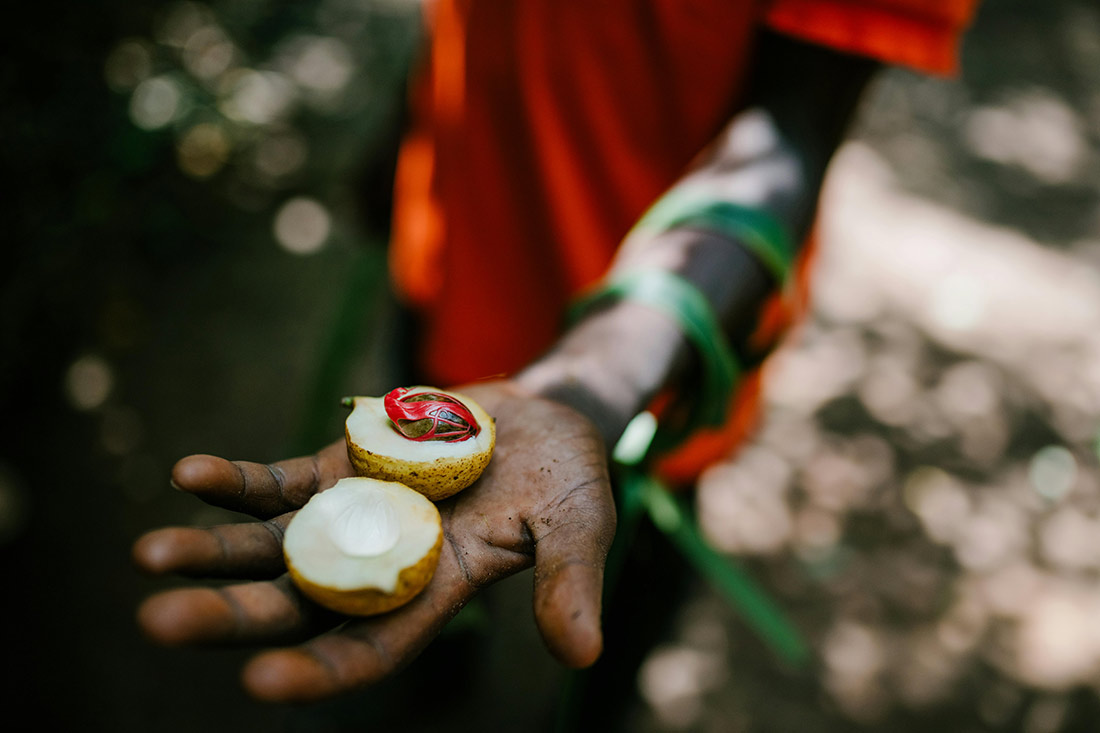Tanzania and its renowned spice island of Zanzibar have long captured the imagination of travelers with their vibrant cultures, stunning landscapes, and rich culinary heritage. Central to this culinary tapestry are the aromatic treasures that have been cultivated and traded in the region for centuries. From the fiery kick of cloves to the exotic allure of cinnamon, these spices not only add depth and flavor to dishes but also reflect the diverse cultural influences that have shaped the region. Let’s embark on a flavorful journey to uncover the spices that make Tanzania and Zanzibar truly remarkable.
Cloves
Zanzibar, often referred to as the “Spice Island,” gained its reputation as a global spice hub primarily due to cloves. These aromatic flower buds, harvested from the clove tree (Syzygium aromaticum), are prized for their intense flavor and medicinal properties.
Zanzibar’s ideal climate and fertile soil provide the perfect conditions for cultivating cloves. This makes it one of the world’s largest producers. Cloves are featured prominently in Zanzibari cuisine. They add warmth to savory dishes like pilau (spiced rice). They lend their distinctive aroma to beverages like spiced tea.

Cinnamon
Cinnamon, with its sweet and woody flavor profile, is another prized spice that hails from Tanzania. It is derived from the inner bark of the cinnamon tree (Cinnamomum verum). This spice is valued for its versatility in both sweet and savory dishes.
In Zanzibar, cinnamon is used to infuse flavor into desserts such as cassata (a traditional cake) and in savory dishes like biryani. Beyond its culinary uses, cinnamon is also cherished for its purported health benefits. They include antioxidant properties and the potential to lower blood sugar levels.

Black Pepper
While not native to Tanzania and Zanzibar, black, green, and white peppers hold a significant place in the region’s spice trade and culinary repertoire. Introduced to the region centuries ago, black pepper quickly became a prized commodity valued for its pungent flavor and culinary versatility. Today, Tanzania is one of the leading producers of black, green, and white pepper in Africa. The southern highlands region is a major cultivation area.
Zanzibar, with its historical role as a spice trading hub, continues to showcase black pepper in its traditional dishes. Pepper adds depth and heat to soups, stews, and marinades.

Cardamom
Cardamom, with its distinctively warm and citrusy aroma, is yet another prized spice cultivated in Tanzania. This fragrant spice, derived from the seeds of various plants in the genera Elettaria and Amomum, is highly valued for its culinary and medicinal properties.
In Zanzibar, cardamom is a key ingredient in desserts like kashata (coconut and cardamom sweets). It is also used to flavor beverages such as Kahawa ya Tangawizi (ginger coffee). Tanzanian cardamom, known for its bold and complex flavor profile, is sought after by chefs and spice enthusiasts worldwide.
Nutmeg and Mace

Nutmeg and mace are derived from the same tropical evergreen tree (Myristica fragrant). These spices are synonymous with warmth and depth of flavor. While not as prominent as cloves or cinnamon, nutmeg and mace are cultivated in Tanzania and Zanzibar. Nutmeg adds a unique and exotic touch to both sweet and savory dishes.
Zanzibari cuisine often incorporates nutmeg and mace into dishes such as biryani and curries. Their aromatic nuances elevate the flavor profile and create a memorable dining experience.

Ginger
Ginger, with its zesty and pungent flavor, is a staple spice in Tanzanian and Zanzibari cuisine. This versatile root, known for its medicinal properties and distinctive taste, is used in a variety of dishes to add a spicy kick and aromatic warmth.
In Zanzibar, ginger features prominently in beverages like ginger tea and in savory dishes such as fish curry. Its zingy flavor complements the richness of the dish, creating a harmonious blend of taste sensations.

Chilies
Chilies, with their fiery heat and vibrant color, are essential spices in Tanzanian and Zanzibari cooking. Whether fresh or dried, these potent peppers are used to add heat and depth of flavor to a wide range of dishes. They are added to soups and stews as well as sauces and marinades.
In Zanzibar, chilies are often incorporated into dishes like pilau and grilled seafood. Their intense heat enhances the overall flavor profile and adds a spicy kick.
On the Scoville Scale, the Tanzanian Chilies have a heat unit (SHU) rating of 2,500–8,000.

Turmeric
Turmeric, known for its vibrant golden hue and earthy flavor, is a beloved spice in Tanzanian and Zanzibari cuisine. It comes from the root of the Curcuma longa plant. It is prized for both its culinary uses as well as its medicinal properties.
In Zanzibar, turmeric is used to add color and depth of flavor to dishes like coconut fish curry and vegetable stir-fries. It adds a warm and peppery note to complement the other spices and ingredients.
 Vanilla Beans
Vanilla Beans
Vanilla beans, with their intoxicating aroma and sweet flavor, are a luxurious addition to Tanzanian and Zanzibari cuisine. While not native to the region, Tanzania has emerged as a leading producer of vanilla beans. Of note is the prized Bourbon variety.
Zanzibar, with its historical ties to the spice trade, has also cultivated vanilla beans for centuries. These fragrant pods are used in desserts like ice cream, custards, and cakes. They have an unmistakable aroma and flavor, adding a touch of indulgence to culinary creations.
Final Thoughts

In conclusion, the spices that hail from Tanzania and Zanzibar are not merely ingredients but rather symbols of a rich cultural heritage and a vibrant culinary tradition. From the fiery allure of cloves to the exotic fragrance of cardamom, and the zesty freshness of ginger to the earthy warmth of turmeric, each spice tells a story of centuries-old trade routes, cultural exchange, and culinary innovation. Whether enjoyed in a traditional Zanzibari dish or incorporated into global cuisines, these aromatic treasures continue to captivate and inspire food enthusiasts around the world, inviting them to savor the flavors of Tanzania and Zanzibar with each tantalizing bite.






